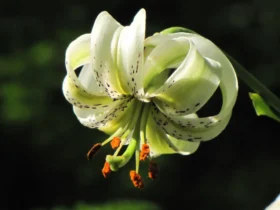Slovenia boasts a diverse range of native and cultivated flowers that thrive in its varied landscapes, from the Alpine regions to the Mediterranean coast.
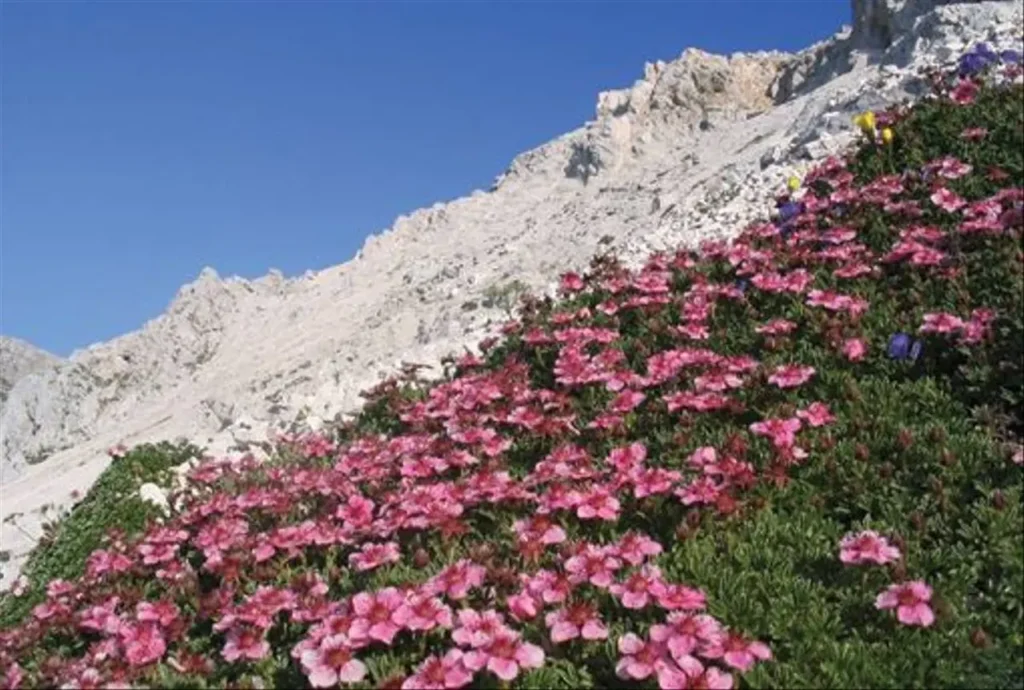
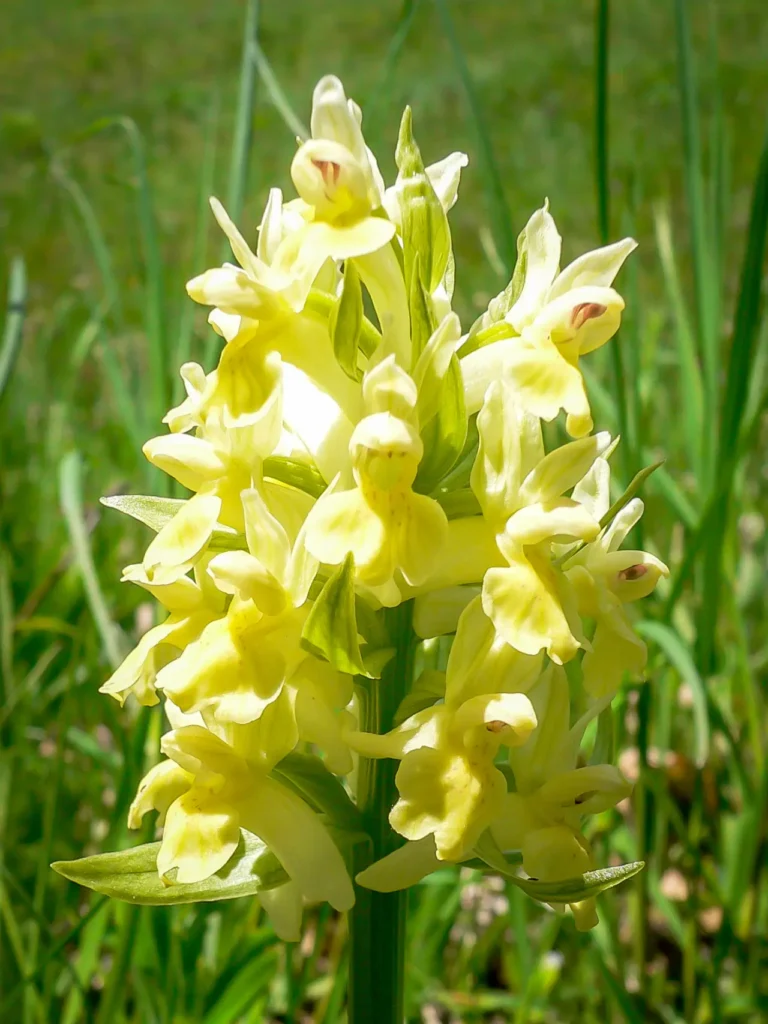
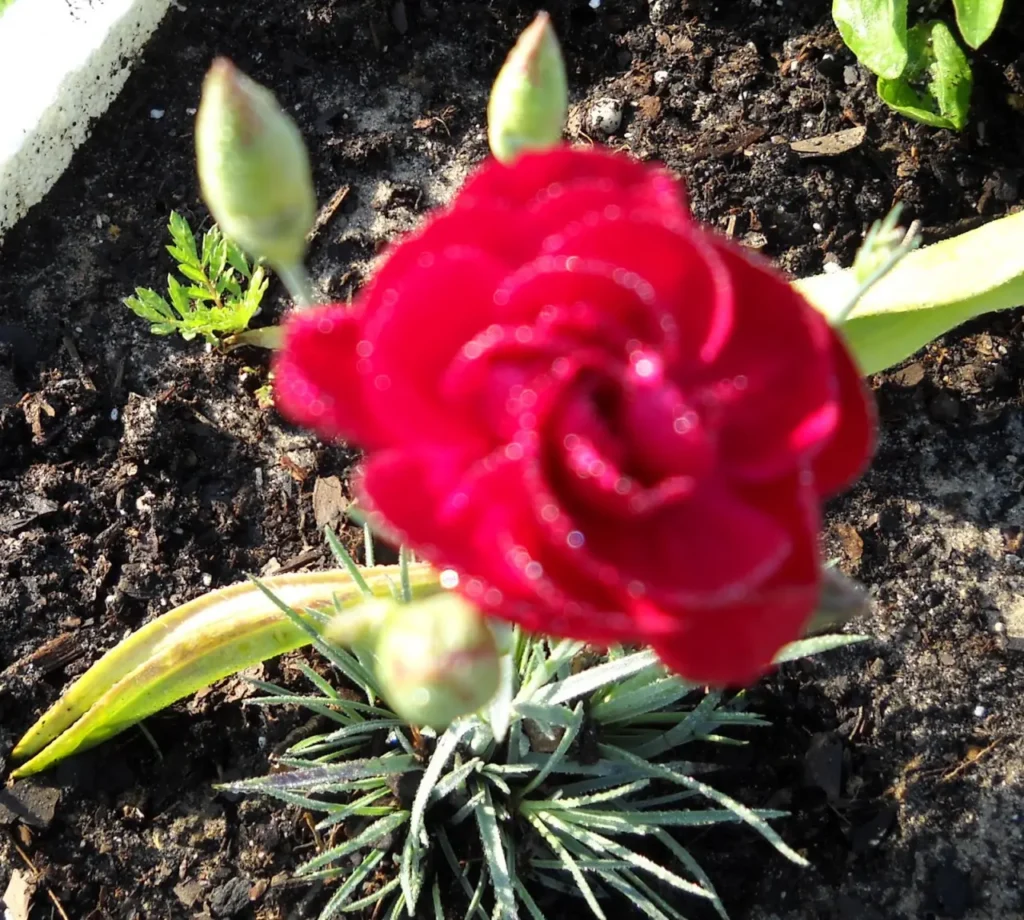
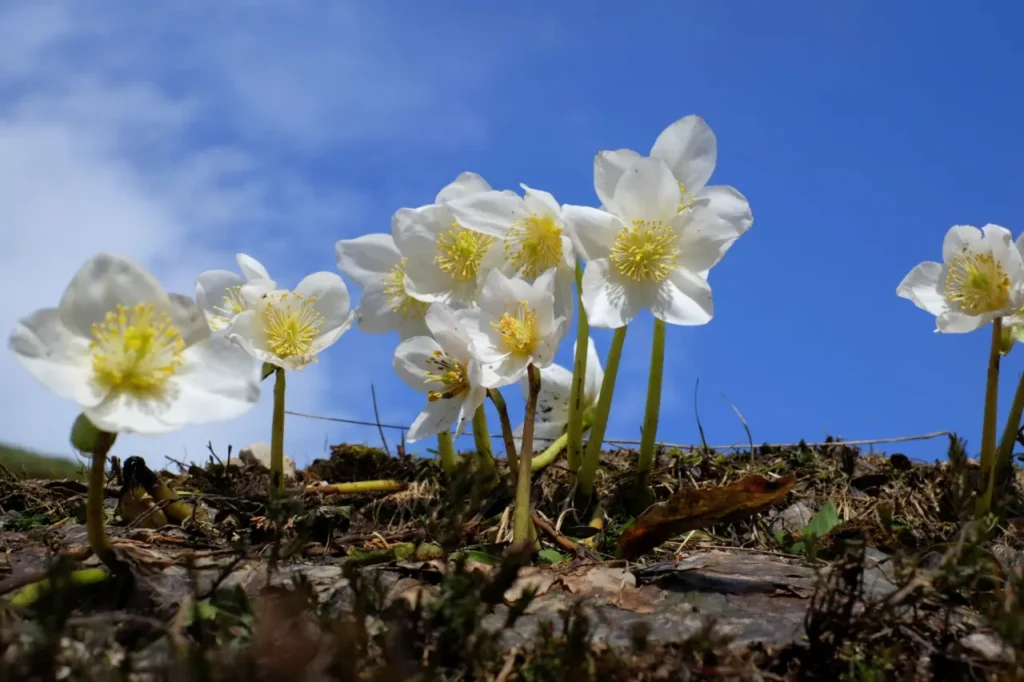
Here is a list of some flowers you might find in Slovenia:
- Edelweiss (Leontopodium alpinum): This iconic mountain flower is associated with the Alps and is known for its woolly appearance and star-shaped white blooms.
- Carniolan Lily (Lilium carniolicum): A native species with striking orange-red flowers, often found in alpine meadows.
- Common Pasqueflower (Pulsatilla vulgaris): Recognizable by its violet-blue, bell-shaped flowers that often appear early in spring.
- Slovenian Bellflower (Campanula slovenica): A rare endemic species with blue, bell-shaped flowers that grow on rocky slopes.
- Slovenian Marsh Gladiolus (Gladiolus palustris): Found in wetlands and meadows, this flower has vibrant pink to purple blooms.
- Yellow Gentian (Gentiana lutea): A tall, robust plant with yellow trumpet-shaped flowers, often used in traditional herbal medicine.
- Alpine Poppy (Papaver alpinum): This poppy species features delicate, white or pale yellow flowers and is adapted to rocky environments.
- Daphne (Daphne mezereum): A deciduous shrub with fragrant pink or lilac flowers, often found in woodlands.
- Spring Gentian (Gentiana verna): A small but vivid blue flower that blooms in early spring, mainly in Alpine areas.
- St. Bruno’s Lily (Paradise Lily, Paradisea liliastrum): This elegant flower has white, star-shaped blooms and is often associated with limestone areas.
- Lavender (Lavandula angustifolia): Cultivated in the Mediterranean-influenced regions, lavender fields are a fragrant sight to behold.
- Rose of Jericho (Anastatica hierochuntica): A unique desert plant that can survive extreme conditions, curling up and “resurrecting” when exposed to water.
- Slovenian Pasqueflower (Pulsatilla grandis): Another native pasqueflower species with large, purple-blue flowers.
- Common Poppy (Papaver rhoeas): Often found in agricultural fields and meadows, this red poppy is a symbol of remembrance in many cultures.
- Common Harebell (Campanula rotundifolia): A delicate, blue-purple flower that often grows in rocky areas and grasslands.
- Orchids (Orchidaceae): Slovenia is home to various orchid species, including the Lady’s Slipper Orchid (Cypripedium calceolus) and the Monkey Orchid (Orchis simia).
- Iris (Iris spp.): Different iris species, such as the Yellow Iris (Iris pseudacorus) and the Hungarian Iris (Iris variegata), can be found in wetlands and meadows.
- Greater Butterfly Orchid (Platanthera chlorantha): A fragrant orchid species with clusters of white or pale green flowers.
- Cornflower (Centaurea cyanus): Often found in agricultural fields and meadows, this blue wildflower is a symbol of rural landscapes.
- Hellebore (Helleborus spp.): Various species of hellebores, known for their early spring blooms, can be found in Slovenian woodlands.
- Globe Flower (Trollius europaeus): Recognizable by its globe-like, yellow to orange flowers, this plant grows in damp meadows and along streams.
- Lungwort (Pulmonaria spp.): These charming spring-blooming flowers have unique spotted leaves and come in shades of pink, blue, or purple.
- Wild Pansy (Viola tricolor): Also known as heartsease, this delicate flower has purple, yellow, and white petals with characteristic markings.
- Oxeye Daisy (Leucanthemum vulgare): A familiar sight in fields and meadows, with white petals and a yellow center.
- Common Cowslip (Primula veris): These yellow, bell-shaped flowers often bloom in early spring and are a sign of meadows and grasslands.
- Wood Anemone (Anemone nemorosa): This delicate white flower carpets woodlands in early spring.
- Meadow Saffron (Colchicum autumnale): Also known as autumn crocus, this flower blooms in the fall and has vibrant pink to purple petals.
- Wild Thyme (Thymus serpyllum): Found in rocky and grassy areas, this aromatic plant produces small pink to purple flowers.
- Wild Carnation (Dianthus carthusianorum): A tall, pink-flowered carnation species often found in meadows and grasslands.
- Bird’s-Eye Primrose (Primula farinosa): This alpine primrose has delicate purple flowers and thrives in high-altitude meadows.
- Wild Gladiolus (Gladiolus imbricatus): This native species features spikes of pink to purple flowers and is often found in meadows and open woodlands.
- Mugwort (Artemisia vulgaris): Although considered a weed by some, mugwort has small, inconspicuous flowers and aromatic leaves.
- Yellow Rocket (Barbarea vulgaris): This wildflower has bright yellow flowers and is often found in disturbed areas.
- Common Twayblade (Listera ovata): An orchid species with inconspicuous greenish-brown flowers, found in shady woodlands.
- Meadowsweet (Filipendula ulmaria): This tall perennial has clusters of fragrant, white or creamy flowers and is associated with wetlands.
- Lesser Celandine (Ficaria verna): A small, bright yellow flower that often carpets woodland areas in early spring.
- Horned Pansy (Viola cornuta): This species of pansy has horn-like projections on its petals and comes in a variety of colors.
- Water Avens (Geum rivale): Found in damp areas, this plant has drooping, reddish-purple flowers.
- European Pasqueflower (Pulsatilla pratensis): A relative of the common pasqueflower, this species has lavender to purple flowers.
- Wood Cranesbill (Geranium sylvaticum): A woodland plant with blue to purple flowers that resemble cranes’ bills.
- Water Lily (Nymphaea spp.): These aquatic plants with floating leaves and showy flowers can be found in ponds and slow-moving waters.
- Butterwort (Pinguicula spp.): Carnivorous plants with bright flowers that trap and digest insects for nutrients.
- Waxflower (Chamaedrys spp.): These small, delicate flowers are often pink, white, or lavender and grow in rocky or alpine areas.
- Hemp Agrimony (Eupatorium cannabinum): Tall plants with fluffy clusters of small pink to purplish flowers, often found near water.
- Marsh Marigold (Caltha palustris): Bright yellow, buttercup-like flowers that thrive in wetlands and along streams.
- Wild Hyacinth (Hyacinthoides non-scripta): Also known as bluebell, this flower forms carpets of blue in woodlands during spring.
- Snowdrop (Galanthus nivalis): A small, white flower that often blooms in late winter or early spring, symbolizing the end of winter.
- Hound’s Tongue (Cynoglossum officinale): A plant with deep blue flowers that grow in clusters, often found in dry or disturbed areas.
- Rock Rose (Helianthemum spp.): These sun-loving plants have delicate, cup-shaped flowers that come in various colors, often found in rocky areas.
- Globeflower (Trollius spp.): Besides the Alpine globeflower mentioned earlier, other species within this genus have bright yellow or orange flowers.
- Marsh Orchid (Dactylorhiza spp.): A group of orchids that thrive in wetlands, meadows, and marshes, with various colors and patterns.
- Bee Orchid (Ophrys spp.): Orchids known for their intricate flowers that resemble female bees, attracting male bees for pollination.
- Fringed Pink (Dianthus superbus): This species of pink has fringed petals and comes in various shades of pink.
- Daisy Fleabane (Erigeron spp.): Wildflowers with small daisy-like flowers that grow in a variety of habitats.
- Autumn Bellflower (Campanula astrolabium): A bellflower species that blooms in late summer to early autumn with blue or violet flowers.
- Bugle (Ajuga reptans): A low-growing plant with spikes of blue, violet, or white flowers, often used as ground cover.
- Bitter Vetch (Lathyrus linifolius): This climbing plant produces clusters of pink, purple, or white flowers and is found in dry meadows.
- Lesser Butterfly Orchid (Platanthera bifolia): A delicate orchid with white flowers that resemble butterflies.
- Alpine Bistort (Polygonum viviparum): This alpine plant has spikes of white to pinkish flowers and distinctive arrow-shaped leaves.
- Heath Speedwell (Veronica officinalis): A small, blue-flowered plant often found in heathlands and grassy areas.
- Heather (Calluna vulgaris): This iconic plant covers large areas of Slovenian moorlands with pink to purple flowers.
- Rock Cinquefoil (Potentilla rupestris): A low-growing plant with yellow flowers that thrives in rocky environments.
- Blackberry Lily (Iris domestica): Known for its unique black-spotted orange flowers, this plant produces clusters of seeds that resemble blackberries.
- Heath Bedstraw (Galium saxatile): A low-growing plant with tiny white flowers often found in heathlands and dry grasslands.
- Knautia (Knautia arvensis): These wildflowers have deep pink to purple flowers and attract pollinators like butterflies and bees.
- Spiked Speedwell (Veronica spicata): This Veronica species has upright spikes of blue or purple flowers.
- Lady’s Mantle (Alchemilla spp.): Plants with scalloped leaves and tiny yellow-green flowers, often found in meadows and woodlands.
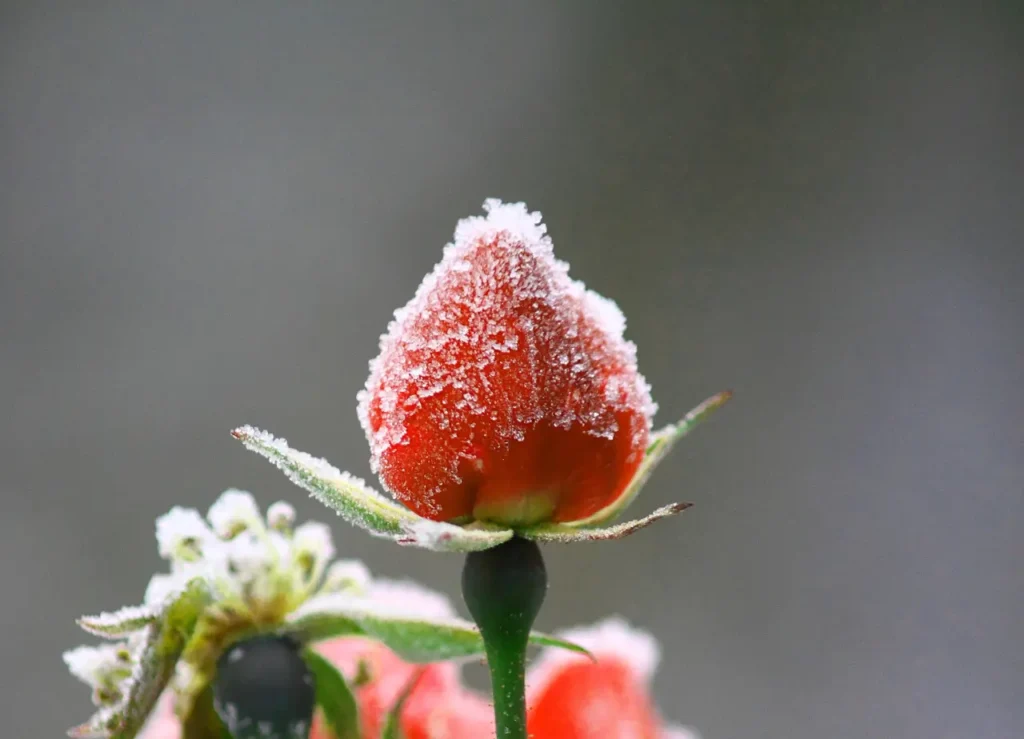
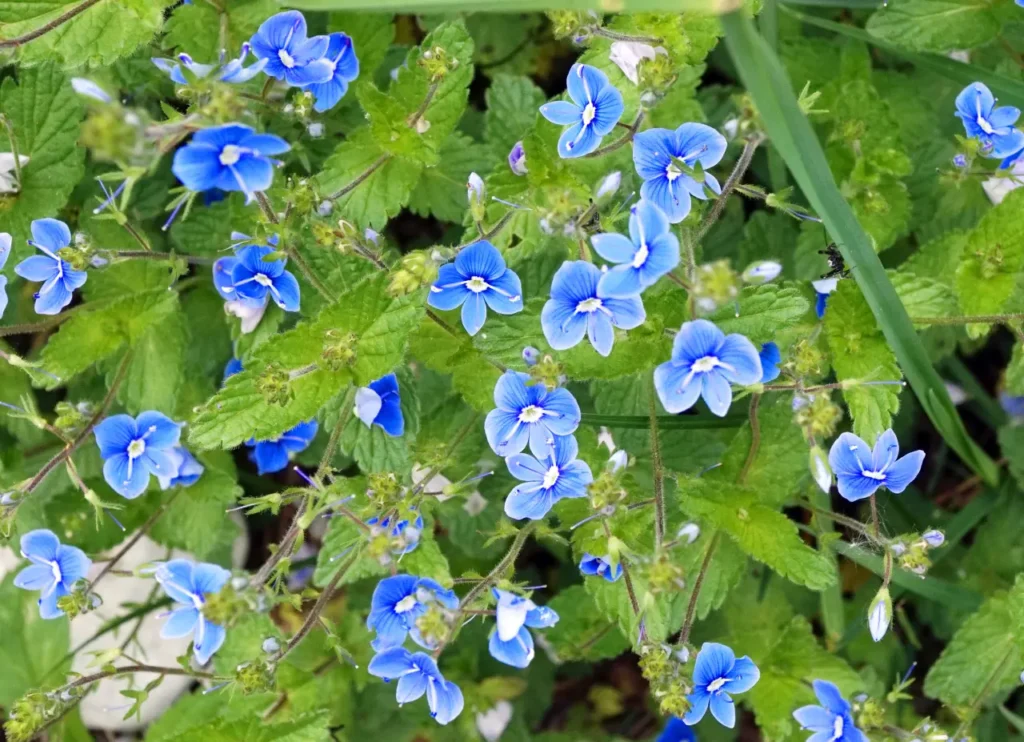
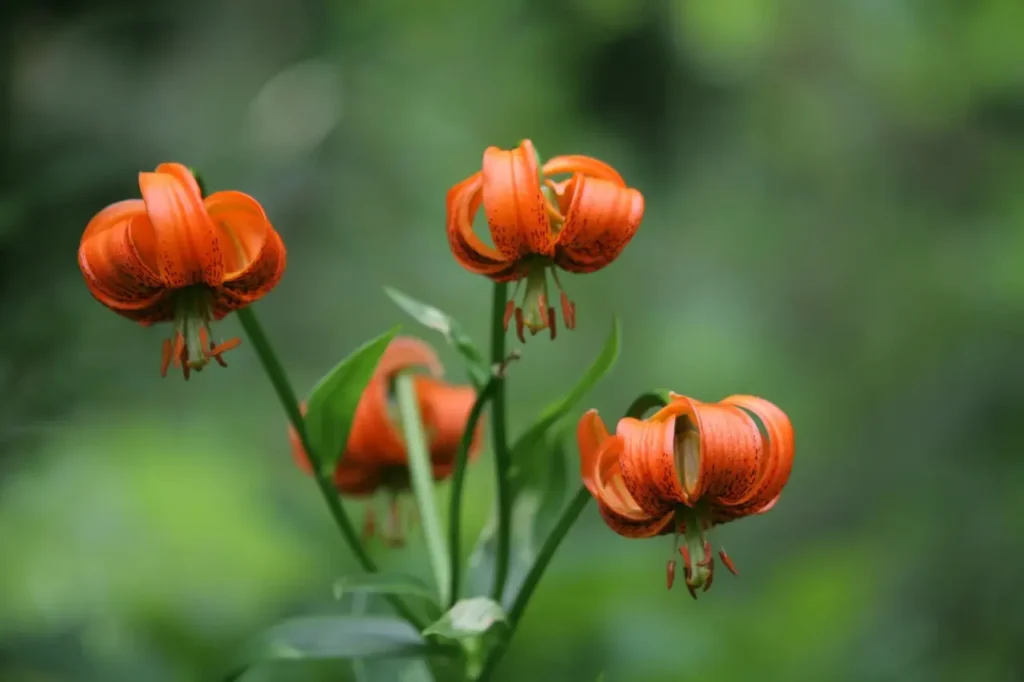
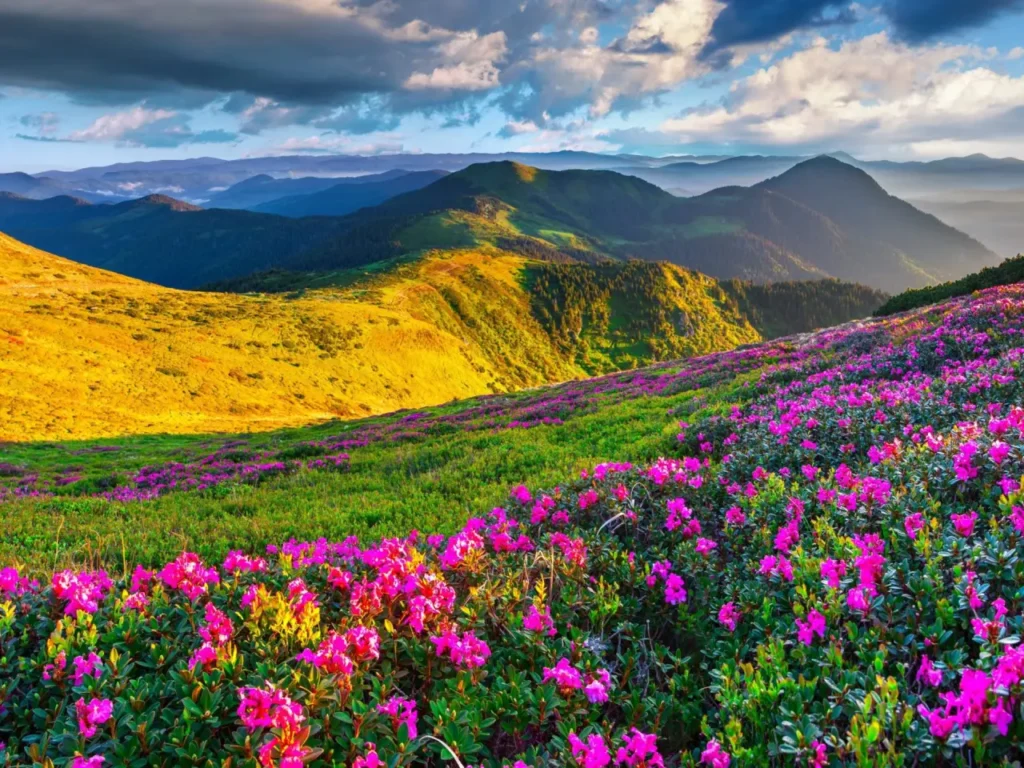
This is just a selection of the many flowers that can be found in Slovenia. The country’s diverse ecosystems and landscapes contribute to its rich floral diversity. Keep in mind that the presence of certain flowers might vary depending on the specific region and time of year.
